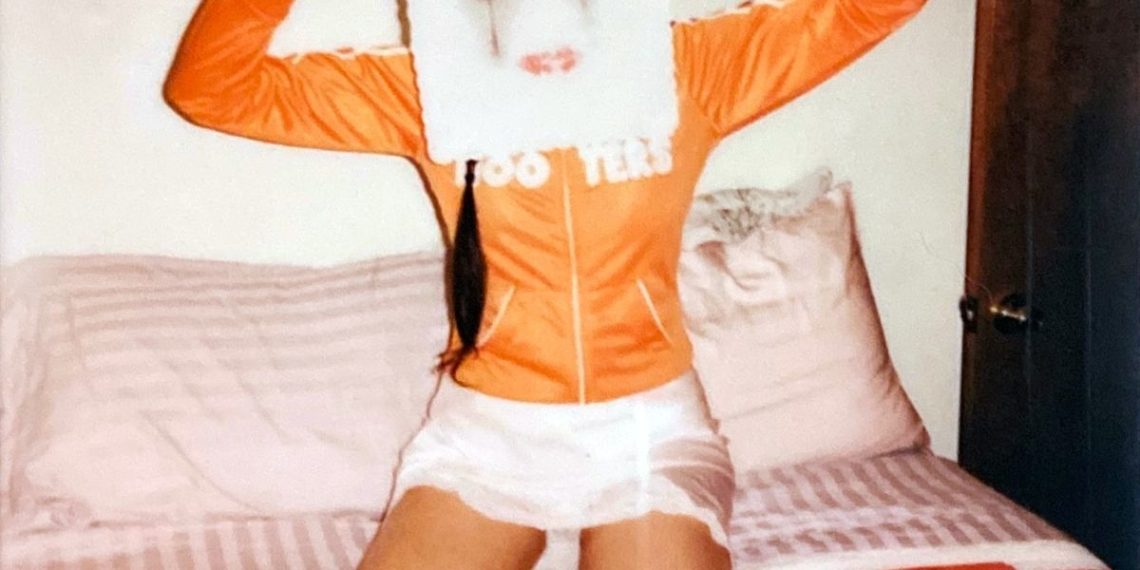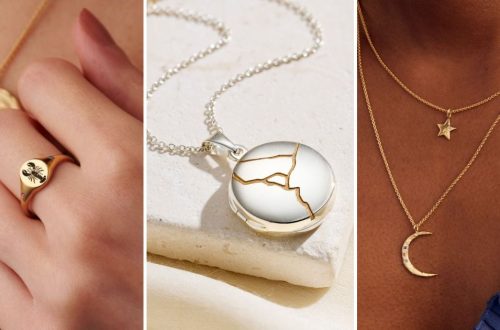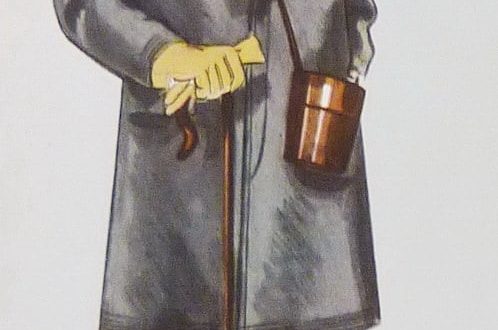It’s here, everything –
Everything anyone ever
Dreamed of, and more.
But love is lost:
The only sacrifice
To live in this heaven,
This Disneyland
Where people are the games.
Thus begins Goodnight Sweet Thing, the sophomore poetry collection by multimedia artist Cristine Brache. The epigraph—a poem by Dorothy Stratten, a writer and Playboy Playmate who was tragically killed—is the perfect way to introduce the themes of fame, fantasy, and objectification that underscore the book. Throughout her oeuvre, which includes paintings and films as well as written work, Brache has zeroed in on women who have been uniquely subject to voyeurism and scrutiny. In Goodnight Sweet Thing, she studies how performing for the male gaze (or any gaze) can be a prison or a power play, employing case studies that range from Girls Gone Wild to seemingly possessed nuns.
Recently, I had the chance to chat with Brache over the phone. Not only did we discuss her book—we also talked about its recent theatrical adaptation, which brought her words to life through rather avant-garde staging. Read on for Brache’s musings on everything from JC Penney catalogs to Fiona Apple to Jell-O wrestling.

Coveteur: Your book begins with a poem written by Dorothy Stratten, a Playboy Playmate who was murdered by her estranged husband and manager. Her ghost haunts much of your work: she’s alluded to by name in your poetry, and some of your recently exhibited paintings feature Playboy Bunnies. How were you first introduced to her story, and what is it about her that intrigues you?
Cristine Brache: “I found out that she wrote poetry maybe a year ago, and it really made me feel sad that it took me so long. I’d seen so much media about her—like, I saw Star 80, which is a biopic about her, and some documentaries—but nobody ever mentioned it. Thinking about Star 80 particularly, it would have been so much nicer if they had shown her writing poetry in the movie and given her a little bit more depth, because I don’t think her character was portrayed with an immense amount of depth in that movie.
Because I write poetry, reading her poetry was all it took for me to really get over the edge with my obsession. Her poems were so sad—especially the one that I have as the epigraph for the book, where she talks about this sadness and disillusionment with Hollywood and what her expectations were.
In my work, I’m generally looking at ways in which people perform, mask, and unmask themselves, for society, for culture, or for relationships. It’s not a criticism of performance in general—I understand why we do it. It’s more like an observation of it. Knowing what was going on behind the scenes with her and seeing how she was always smiling in front of the cameras, and then reading her poetry… That kind of duality [she exhibits] is really compelling to me. Aside from that, I think about this false promise [women are presented with]. I think about shows like Mad Men where all the female characters are “meeting their end of the deal” in terms of gender roles—like, “If you make the house and you look pretty all the time and you’re always there for me in whatever way I need as a man, then you will be taken care of and you will be rewarded.” But none of the women in Mad Men were rewarded. They were always let down. And it was the same, I feel, with Dorothy. Like, “If I check these boxes—I’m a beautiful woman, I can get on Playboy—I’ll just be sorted.” You have this expectation of safety financially, or in whatever way one might look for safety and security—but she didn’t get it. She died. As you become more successful, you realize that thingsare still hard and these kinds of expectations and promises are not what they’re cracked up to be.”
Absolutely. Even if you ascend in fame or wealth or status, you can’t escape these societal trappings.
CR: “Yeah. And it’s not to diminish the things that one does get with success, but I feel like it’s never exactly how it seems.”
You mentioned Mad Men, and you weave references to various TV shows, movies, and videos throughout the book. I was most interested in your series of poems called “Girls Gone Wild,” which make references to fame, objectification, and their relation to suffering and violence.
CR: “I think that young women, in particular, are often left with this quiet understanding that if you objectify yourself and you’re hot, you’ll be able to get by in life or get further in life. It’s, again, a false promise. Those Girls Gone Wild commercials were around when I was a teen, and it was so bizarre to me that it was ok for them to be on TV. The early 2000s were such a different time, so misogynistic to women in media—I think of Britney Spears and Lindsay Lohan. Girls Gone Wild… I feel like it’s the crux of that, it’s so abject. [In the videos], it’s in plain view, this way in which young women can be exploited and how women willingly participate knowing that. I can’t speak for all women, obviously, but from my own experience of being young and attractive, there’s this feeling that if you perform, you’ll get security or safety.”

On the note of performance, I noticed that you, Cristine, appear as a named entity in many of the poems. I’d love to hear more about your attitude toward representing yourself in your work—is there a concerted effort to build a character that is Cristine, or are you simply translating your inner monologues when you address yourself?
CR: “I feel like it’s a bit of both. Poetry is probably the most unmediated way that I express myself. It does feel like a diary in a lot of ways; it’s very confessional. But there are a lot of poems in the book that are not at all about me—that could seem like they’re about me but they’re just not. Sometimes I’m writing about some kind of abstract person, but when I’m using my name, that’s very much me referring to myself at some moment in time. Sometimes my poems are like photographs of feelings or experiences or moments—like a documentation of my interiority in an instant. Sometimes the feelings are so strong that I just have to write them down. I try to remain playful about it. I think that the book is kind of funny—I hope it is. (Laughs) I’m never overly serious about myself. [The book is] self-aware, and I sometimes poke fun at myself and play with a lot of the complicated feelings I have about existing.”
Do you enjoy the public side of being an artist, or is it more of a challenge or frustration for you?
CR: “It depends. With the kind of work that I make, I’m not overtly public. I get to mediate my persona on Instagram or however else—it’s always mediated. If I were a live performer or something… That’s just a whole different thing when you’re performing with your body. But my work is not my body. It’s writing or artwork, so I can watch people watch it behind the scenes. I feel like I’m behind the curtain watching people even when I am public—there’s some separation between my actual person and what’s seen in the book. I don’t know if I enjoy it or not; I feel neutral about it.”
Many of the cultural references that appear in your text have been subsumed into buzzword-y “genres” spawned by social media. Fiona Apple’s songs have been referred to as “sad girl” music or “femcel” music; “Gone Girl” is often described as a “female rage” film. I’m curious about how you respond to phrases like this entering the popular lexicon—are they helpful heuristics, or do you find them useless, maybe even detrimental?
CR: “I just like to play with these tropes that define us culturally. A lot of it feels like an exorcism for me. Gone Girl, in particular… There’s this idea that there are so many movies about men being serial killers and psychos and doing really terrible things, but there’s no Gone Girl equivalent for a man. But in the movie, Rosamund Pike is very much just acting like a man. And then it’s like we’re going to demonize this character and give it a whole category for a woman in culture… That’s a bit frustrating. You referred to the poem ‘Gone Girl Summer’; there was that trend online where it was ‘Something Girl Summer.’”
It started with “Hot Girl Summer,” and then it spiraled out of control.
CR: “Yeah, yeah. I thought it would be funny to write about “Gone Girl Summer” in that context. It made me laugh, but also, why not let it be a Gone Girl Summer? (Laughs) Hot Girl Summer is cool, hot girls forever, but I think Gone Girl can be hot too.”
Representation for Gone Girls.
CR: “(Laughs) I get it! I get the need to want to be a Gone Girl.”
Totally, and that’s why so many people online have built this ethereal genre around it—they want there to be a cinematic universe.
On a very different note, religion is another thread that runs throughout the book. You talk about a “mystical experience with Mary Magdalene” and also describe the alleged possession of Sister Jeanne des Anges. As someone who grew up Catholic, I’m always curious when I see religious themes in another artist’s work—how did notions of spirituality influence the book?
CR: “I was raised Catholic, too. I’m not a tradcath or whatever; I was raised Catholic, so these kinds of images are imprinted in me. The possessions—I’m obsessed with that case. It was a famous case in France, the Loudun possessions, in the 17th century. Sister Jeanne de Anges—Joan of the Angels—supposedly made a pact with the devil and the grenadier of the village, and I guess they had some wild sex, and she got possessed and went back to the convent, and all this hysteria manifested and the whole convent of nuns became possessed and were acting hypersexual. Around this time—I think it was 100 years before the Salem Witch Trials—there were a lot of epidemics of nuns getting possessed in France. [When writing the poem], I was thinking about ways people codify their behavior and present themselves in a socially acceptable way when ways in which they want to express themselves are not acceptable. In this case, I imagine that Jeanne, as a nun, wasn’t allowed to have sex, so naturally, she would have all this sexual energy that wasn’t going anywhere—and what’s a logical way for a nun to be sexual? It “makes sense” for her to be possessed—then she can excuse her sexuality without it being a problem. It was much easier for people to say, “She’s possessed, that’s why she’s acting like this,” instead of, “She just wants to fuck.” If she just wanted to fuck, that would be way more problematic than if she was possessed by the devil.
Also, I see her as a huge icon because exorcisms were an early way that tattooing existed in Europe. The demons would exit through a certain part of the person’s body, and the priest would tattoo that part of their body with the names of the saints that assisted during the exorcism. And so she has a list of four or five names on her hand, right by her thumb, where the demons left. They were called “exit wounds.” Because Catholicism forgives as long as you repent, she was able to tour around Europe to show off the exit wounds, the tattoos, and she was getting paid for that. And she rode to one of the highest levels of Catholicism. She was revered. So she hustled this whole situation, she created this whole spectacle and scandal from the possession, and the grenadier got burned alive or some shit. She got away with it, scot-free. She became a celebrity in the Catholic circuit at that time. I admire her because, considering the context of the time for women, it seemed like a smart strategy to give yourself some power or make yourself feel free without being bad under the eyes of the patriarchy or however you want to say it. It was a socially acceptable way for her to be crazy because if she actually were just crazy and free as a woman, that would have been way more threatening.”

Let’s talk about the physical book as an art object. The images on the front and back covers of the book are striking: we see various men and women pouring water on each other. There’s an interesting reciprocity in that both man and woman get the chance to be the recipient of the action. I’d love to hear more about how you created these images. Did you take the photographs yourself? How did you come up with the concept?
CR: “I designed the cover; my friend Manon did the typesetting and everything on the inside. The images I generated with AI. They took me a very long time, and I had to feed the AI reference images. The whole front cover design and back cover are inspired by old JC Penney catalogs. I don’t know if anybody now knows what those things are, but when I was young, they were thousand-page catalogs. Imagine if a whole store website had a print [catalog] of every single thing they have on their site. [That was] early department store culture in America. You could get these catalogs from Sears, JC Penney, a bunch of places, and my mom used to get them. I was fascinated with the imagery inside of them because they looked uncanny. People almost looked like mannequins… again, it’s this feeling of performance, this ideal of being a human, an American, a woman. This allure to this ideal way of existing. Something about that is so charming to me and bizarre and uncanny. I was obsessed with the images in a way I can’t articulate clearly right now. I wanted to make my own version of those images. I tried to capture the uncanny delight of these references. I thought it would be funny if they were pouring water or tea on each other. (Laughs) I guess it’s more overt uncanniness. The men are in suits, and the women are in dresses… So much of my work is about power dynamics and gender roles, and I thought it was a nice visual way to highlight that aspect of the book, this dynamic where they’re giving each other water more than pouring it on each other—giving and receiving water. And AI generated it. I edited the images in Photoshop as well. The back cover is like a catalog spread in a JC Penney catalog, and the front cover has the same font as the JC Penney logo.”
I’m guessing that you were inspired to use AI because you wanted to go for the uncanny, dreamlike effect?
CR: “It’s a combination of that and just not having had the resources to stage it myself. I do like AI a lot; I think of it as a tool. It has so many different uses that are not the overt uses that people think about or are concerned about. As a person who uses Photoshop a lot, the Adobe AI does stuff that I’ve just been dying for Photoshop to do.”

Speaking of different types of art, you recently adapted the book into a play starring Emily Allan, Betsey Brown, and Joshua Weidenmiller. It was advertised on Instagram with the tagline “Jell-O, Wrestling, Mesmerism.” I need to know what happened in that theater.
CR: “When I was making this book, I was like, I don’t think anybody has ever adapted a book of poems to the stage. I was like, I wanna be the first to do that. And I was thinking, What would that look like? What does my poetry look like visually? I had this image of women mud wrestling, and then Victorian, Freudian female pathologization. The medicalization of women’s emotions—that is another part of history that I’m also obsessed with. I was also thinking about mesmerism, which was very popular then. I love the idea of mesmerism or hypnosis; I think it’s very beautiful. There’s this idea that you’re being puppeteered or guided by somebody else; that you can just give your will to somebody else, that someone’s kind of masterminding you. There’s also a lot of fetish-type stuff of women being hypnotized, like, What are they gonna do when they’re hypnotized? (Laughs) I had all those images in my head, as I thought that’s what my poetry looked like. All of that, for me, is this exorcism that I keep describing. You mentioned earlier spirituality in the context of Catholicism, but there is spirituality in the book where I’m thinking more existentially about the meaning of life. There’s also this stuff about aging, as a woman in particular. I started these poems during Covid when I was thinking about death in a way that I hadn’t before. I was thinking about love, because I feel like love is what gives our life meaning, and how we reflect onto each other and how we connect.
Anyway, I wanted to adapt the book. I feel like performance art is the poetry of the stage, so I thought about making it a performance art piece. I worked with one of my favorite performance artists, Sigrid Lauren, who co-directed and co-adapted it with me. We wrote it together, and she did all the choreography. It was a kind of happening, and it had three acts, and the first act was this Jell-O wrestling situation. Betsey Brown starred in it with Emily Allan, and Joshua Wiedenmiller was kind of like the referee. Betsey played this character called Nothing Girl, and Emily played Mary Magdalene. All the lines of dialogue were just lines of poems from the book contextualized into the setting of the performance piece. [The characters] were speaking lines in a way that was appropriate for their setting, but the lines themselves were very poetic… they made sense, but not in a linear way, how we’re talking now. There was also a live score and sound design by Ryan Woodhall, and we used a lot of AI voices, too, which I use in a lot of my video art. We had an AI commentator mimic the voice of a WWE announcer and speak my poems as if it were announcing a wrestler coming to the ring. The Jell-O wrestling match is very slow motion, very choreographed, and it translates to this shrink-patient dynamic where Betsey’s character is being analyzed by the referee, who becomes a therapist… I saw Betsey’s character and Emily’s character as two parts of the same mind—the part of yourself that does perform dutifully and the part that is crippled by the performance because it’s betraying you.
In the third act, they go into this hypnosis thing while they’re in therapy—and they have a tantrum and they have to assume [certain] roles. At the end, [they reconcile with the fact that] they have to perform. There’s a radical acceptance of these roles they have and the kind of freedom that there is in radical acceptance, where if you give yourself fully to something, even if it is not something you want to do, there’s some freedom in that space, even if it feels extremely controlled. There are some poems in the book that are about this—[for example], “Feudal Mutations and Meditations” is about how music offers one of the few freedoms we have left. And for me, that’s what the book is about and what the performance is about. We’re really controlled in a lot of ways, but parts of your headspace can’t be colonized.”





